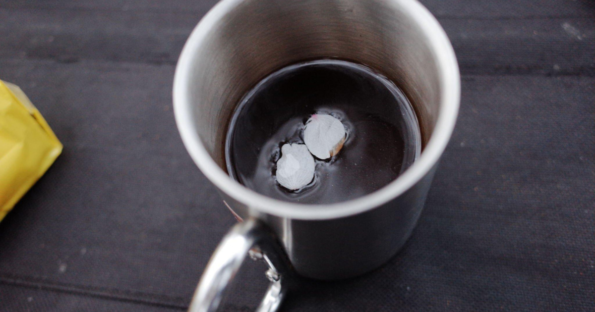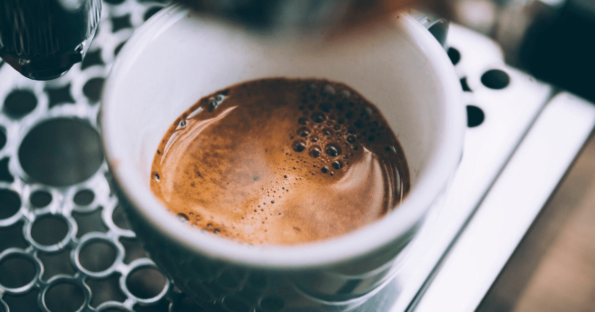As a home barista, nothing is more frustrating than pulling a shot of espresso only to discover a wet, soupy puck left behind. I used to scratch my head, wondering what I was doing wrong whenever this happened.
But over time and plenty of trial and error, I’ve learned how to troubleshoot wet espresso pucks.
In this article, I’ll share what I’ve learned about the causes of wet pucks and how to fix them. I aim to help fellow home baristas diagnose and resolve this common espresso extraction issue.
What Causes Wet Espresso Pucks?
A wet or soupy espresso puck is abnormal and indicates an uneven extraction. While some moisture is expected, the spent puck should hold its shape and not be excessively wet.
Based on my experience, three main culprits can lead to wet pucks:
Channeling
Channeling happens when water finds the path of least resistance through the coffee bed, leading to uneven saturation.
This prevents full extraction and leaves behind a wet puck.
Improper Grind Size
If the grind is too coarse, the water passes through too quickly without fully extracting the coffee oils.
But if it’s too fine, over-extraction can lead to a soupy puck.
Uneven Tamping
Inconsistent tamping creates an uneven coffee bed for the water to flow through.
This causes channeling and uneven extraction, resulting in excessive moisture in the puck.

How to Fix Wet and Soupy Pucks?
Now that we know what causes wet espresso pucks let’s discuss some solutions I’ve used to fix this problem:
Dialing In the Grind
Experiment with grind settings to find the sweet spot – not too coarse or fine. This took time and patience, but it was worth it for consistently good pucks.
Tamping Evenly
I improved my tamping technique to apply even pressure across the coffee bed. Using a calibrated tamper also helped ensure consistency.
Distributing the Coffee Grounds
Before tamping, I evenly distribute the grounds in the portafilter using a needle tool. This breaks up clumps and evens out the coffee bed.
Adjusting the Dose
I tweaked the amount of coffee I use to find the right dose for my machine. Weighing the dose rather than eyeballing improved results.
Preventing Wet Pucks
Consistency is key to preventing wet espresso pucks. Here are some pro tips:
- Stay on top of equipment maintenance and use fresh coffee beans within 4 weeks of the roast date.
- Inspect the appearance of pucks after each shot to identify issues early.
- Keep a detailed log of shots to spot patterns requiring adjustment.
With some care and fine-tuning, you can get your espresso extractions back on track. Don’t settle for wet pucks that indicate subpar shots. Follow these tips and enjoy cafe-quality espresso at home.
Let me know if you have any other tricks for fixing soupy pucks!
Troubleshooting Common Causes of Wet Pucks
Even when you follow all the best practices, wet pucks may occasionally occur.
Here are some common causes to troubleshoot when you notice excessively moist coffee grounds:

Old Coffee Beans
The freshness of the beans is crucial for extraction. As beans stale after 2-4 weeks post-roast, it becomes harder to achieve an even extraction and dry puck. Try using freshly roasted beans.
Inconsistent Particle Size
If your grinder produces an uneven grind with fine powder and large boulders, this can lead to uneven saturation and channeling. Cleaning and recalibrating the grinder can improve consistency.
Dose Too Low
If the dose is too low for your basket, there may be excessive space for the water to channel around the coffee bed. Try increasing the dose slightly.
Basket Screen Clogged
If residual oils and fines clog the basket screen, it can impede flow and cause bypass channeling. Carefully clean the screen to keep it unobstructed.
Water Temperature Fluctuation
Inconsistent brewing water temperature can also produce a subpar extraction. Ensure your machine maintains a stable temp at around 200°F.
By methodically addressing each factor, you can zero in on the root cause when wet pucks pop up and correct it. Don’t get discouraged, solving extraction issues takes practice but pays off in delicious espresso. Let me know if you need any other troubleshooting tips for wet pucks or improving your shots!

My name is Michael Jones, and I’m a coffee enthusiast and expert based in the US. I run my own coffee shop, and I’m passionate about everything related to coffee. On my website, Coffee and Comfort, I share my knowledge and tips to help you elevate your coffee experience. Whether you’re a beginner brewer or a seasoned barista, I have something for everyone. I’ll teach you how to choose the right coffee beans, grind them perfectly, and brew a delicious cup of coffee at home. I’ll also share tips on how to make different coffee drinks, like lattes, cappuccinos, and espressos. But more than just teaching you about coffee, I want to help you create a coffee lifestyle that you love. Coffee is more than just a beverage; it’s a way to connect with people and enjoy the simple things in life.
